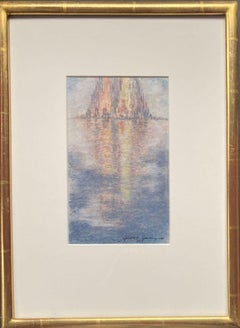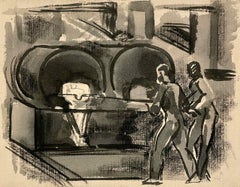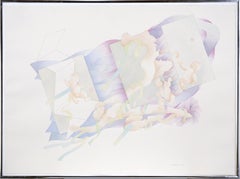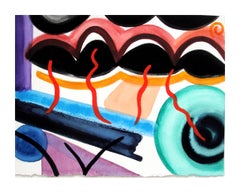American Modern Abstract Drawings and Watercolors
Late 20th Century American Modern Abstract Drawings and Watercolors
Pastel
1930s American Modern Abstract Drawings and Watercolors
Watercolor, Paper
1980s American Modern Abstract Drawings and Watercolors
Paper, Watercolor, Pencil
1980s American Modern Abstract Drawings and Watercolors
Pastel, Pencil
21st Century and Contemporary American Modern Abstract Drawings and Watercolors
Handmade Paper, Watercolor
1980s American Modern Abstract Drawings and Watercolors
Pastel, Pencil
Mid-20th Century American Modern Abstract Drawings and Watercolors
Paper, Pastel, Ink
Early 20th Century American Modern Abstract Drawings and Watercolors
Pencil
1980s American Modern Abstract Drawings and Watercolors
Pastel, Pencil
Mid-20th Century American Modern Abstract Drawings and Watercolors
Paper, Gouache
Late 20th Century American Modern Abstract Drawings and Watercolors
Watercolor
1950s American Modern Abstract Drawings and Watercolors
Ink, Gouache, Graphite, Paper
1950s American Modern Abstract Drawings and Watercolors
Gouache, Graphite, Paper
1930s American Modern Abstract Drawings and Watercolors
Watercolor, Paper
1960s American Modern Abstract Drawings and Watercolors
Paper, Ink, Watercolor
1980s American Modern Abstract Drawings and Watercolors
Pastel, Pencil
Late 20th Century American Modern Abstract Drawings and Watercolors
Pastel
1950s American Modern Abstract Drawings and Watercolors
Ink, Gouache, Graphite, Paper
Mid-20th Century American Modern Abstract Drawings and Watercolors
India Ink, Paper
American Modern Abstract Drawings and Watercolors
Paper, Watercolor
Mid-20th Century American Modern Abstract Drawings and Watercolors
Paper, Oil Pastel, Gouache
Mid-20th Century American Modern Abstract Drawings and Watercolors
Pencil
1980s American Modern Abstract Drawings and Watercolors
Pastel, Pencil
Late 20th Century American Modern Abstract Drawings and Watercolors
Pastel
1980s American Modern Abstract Drawings and Watercolors
Pastel, Pencil
1980s American Modern Abstract Drawings and Watercolors
Pastel, Pencil
1980s American Modern Abstract Drawings and Watercolors
Pastel, Pencil
1980s American Modern Abstract Drawings and Watercolors
Pastel, Pencil
Early 20th Century American Modern Abstract Drawings and Watercolors
Carbon Pencil
Late 20th Century American Modern Abstract Drawings and Watercolors
Watercolor
1980s American Modern Abstract Drawings and Watercolors
Paper, Watercolor
1980s American Modern Abstract Drawings and Watercolors
Paper, Watercolor
Mid-20th Century American Modern Abstract Drawings and Watercolors
Watercolor
Early 20th Century American Modern Abstract Drawings and Watercolors
Paper, Photographic Film
1960s American Modern Abstract Drawings and Watercolors
Archival Ink, Paper, Watercolor
1930s American Modern Abstract Drawings and Watercolors
Ink
1960s American Modern Abstract Drawings and Watercolors
Graphite
1940s American Modern Abstract Drawings and Watercolors
Mixed Media, Illustration Board, Pen
Early 20th Century American Modern Abstract Drawings and Watercolors
Pen, Pencil
1930s American Modern Abstract Drawings and Watercolors
Watercolor
1980s American Modern Abstract Drawings and Watercolors
Watercolor, Pencil
1980s American Modern Abstract Drawings and Watercolors
Pastel, Pencil
1940s American Modern Abstract Drawings and Watercolors
Watercolor, Gouache, Paper
1950s American Modern Abstract Drawings and Watercolors
Paper, Ink
21st Century and Contemporary American Modern Abstract Drawings and Watercolors
Handmade Paper, Watercolor
20th Century American Modern Abstract Drawings and Watercolors
Paper, Watercolor, Gouache, Graphite
1940s American Modern Abstract Drawings and Watercolors
Watercolor
1970s American Modern Abstract Drawings and Watercolors
Canvas, Charcoal
20th Century American Modern Abstract Drawings and Watercolors
Ink, India Ink



